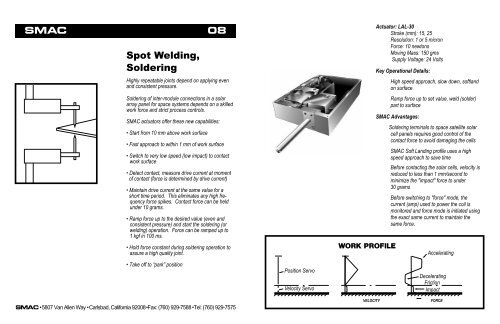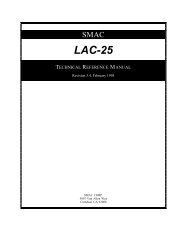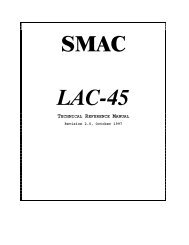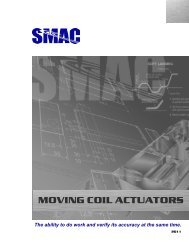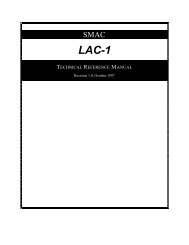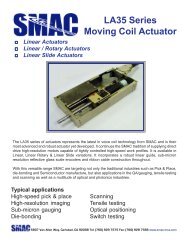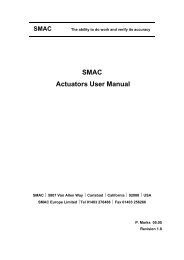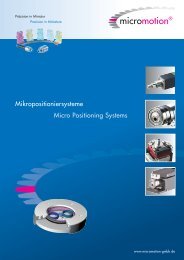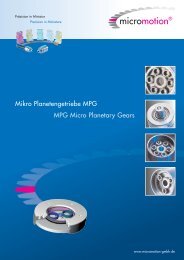SMAC Applications Book - ORLIN Technologies Ltd
SMAC Applications Book - ORLIN Technologies Ltd
SMAC Applications Book - ORLIN Technologies Ltd
You also want an ePaper? Increase the reach of your titles
YUMPU automatically turns print PDFs into web optimized ePapers that Google loves.
<strong>SMAC</strong> 08<br />
Spot Welding,<br />
Soldering<br />
Highly repeatable joints depend on applying even<br />
and consistent pressure.<br />
Soldering of inter-module connections in a solar<br />
array panel for space systems depends on a skilled<br />
work force and strict process controls.<br />
<strong>SMAC</strong> actuators offer these new capabilities:<br />
¥ Start from 10 mm above work surface<br />
¥ Fast approach to within 1 mm of work surface<br />
¥ Switch to very low speed (low impact) to contact<br />
work surface<br />
¥ Detect contact, measure drive current at moment<br />
of contact (force is determined by drive current)<br />
¥ Maintain drive current at the same value for a<br />
short time period. This eliminates any high frequency<br />
force spikes. Contact force can be held<br />
under 10 grams.<br />
¥ Ramp force up to the desired value (even and<br />
consistent pressure) and start the soldering (or<br />
welding) operation. Force can be ramped up to<br />
1 kgf in 100 ms.<br />
¥ Hold force constant during soldering operation to<br />
assure a high quality joint.<br />
¥ Take off to ÒparkÓ position<br />
Position Servo<br />
Velocity Servo<br />
WORK PROFILE<br />
Actuator: LAL-30<br />
Stroke (mm): 15, 25<br />
Resolution: 1 or 5 micron<br />
Force: 10 newtons<br />
Moving Mass: 150 gms<br />
Supply Voltage: 24 Volts<br />
Key Operational Details:<br />
High speed approach, slow down, softland<br />
on surface<br />
Ramp force up to set value, weld (solder)<br />
part to surface<br />
<strong>SMAC</strong> Advantages:<br />
Soldering terminals to space satellite solar<br />
cell panels requires good control of the<br />
contact force to avoid damaging the cells<br />
<strong>SMAC</strong> Soft Landing profile uses a high<br />
speed approach to save time<br />
Before contacting the solar cells, velocity is<br />
reduced to less than 1 mm/second to<br />
minimize the "impact" force to under<br />
30 grams<br />
Before switching to "force" mode, the<br />
current (amp) used to power the coil is<br />
monitored and force mode is initiated using<br />
the exact same current to maintain the<br />
same force.<br />
Accelerating<br />
Decelerating<br />
Friction<br />
Impact<br />
<strong>SMAC</strong> •5807 Van Allen Way •Carlsbad, California 92008•Fax: (760) 929-7588 •Tel: (760) 929-7575<br />
VELOCITY<br />
FORCE


